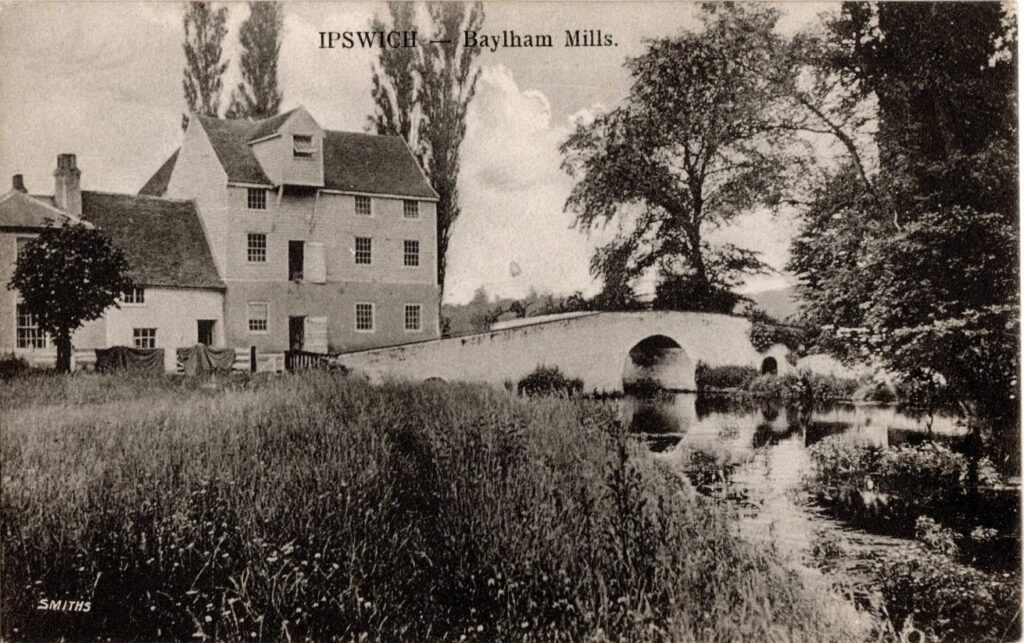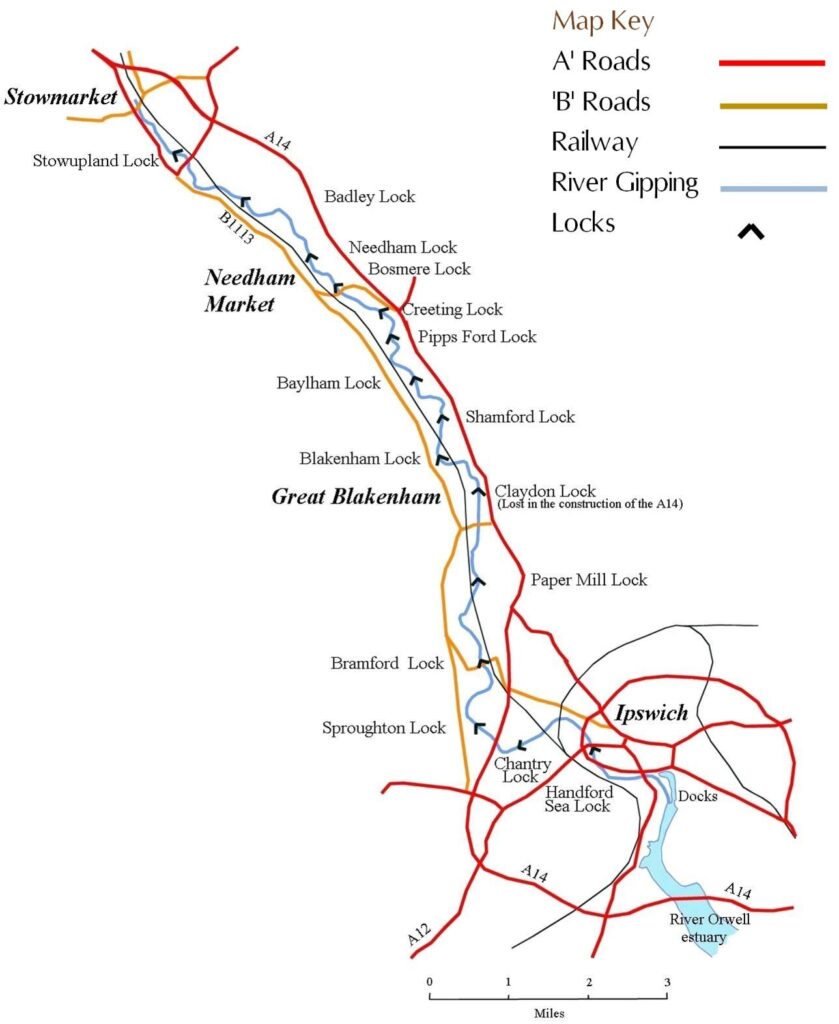The Life and Works of John Rennie (7 June 1761 – 4 October 1821)
Stowmarket Navigation
River Gipping Trust
The Stowmarket Navigation in Suffolk was almost certainly the first project to be constructed under John Rennie’s design and direction on his own account as a consulting engineer. Some of the remaining locks and bridges along the River Gipping which were built as part of this project may be the oldest John Rennie designs still in existence. His involvement began in 1791 and the project was successfully completed only 18 months after his initial surveys. The experience helped to develop his expertise and early reputation in bridge and canal engineering.
The project to develop the Stowmarket Navigation was already underway when Rennie became involved. Just one year into construction, the trustees became very concerned about how it was being constructed and its completion date. They asked John Rennie to assess the state of the project. His inspection was carried out in the presence of the trustees on 13–15 December 1791, and he produced a report that noted the upper section was almost complete with three turf and timber locks, but that all further locks and structures should be made of brick.
Rennie felt that although William Jessop (the appointed engineer) had successfully laid out the plans prior to obtaining the initial Act of Parliament, there had been a failure to adequately survey the river and detail the works that would be required to construct the navigation. He particularly criticised Jessop’s appointed surveyor (Isaac Lenny) on the lack of accuracy, and recommended that a new survey should be made, so that the work needed could be identified.
Rennie wrote ‘The original Survey is very incorrect. I am surprised Mr Lenny should have paid so little attention to accuracy – this makes it necessary to set about a new Survey so as to lay down the true form of the River with the different works to be proposed. The Side Cuts should be laid down and the places of the Locks marked out. When this is completed the ground for the foundation of the Locks should be bored which will enable me to point out the proper mode of laying down the foundation of each.’
And he went on to write that …‘In the future conduct of these works you must have some person who understands Brick making, Brick Locks and Bridges with the proper composition of Mortar.’ and… ‘I would advise that the three timber locks now executed should stand, but the others to be done of Brick’, and… ’I shall send you a person to make the Survey above mentioned in February or March next and I shall allow for a few days myself to see matter put in a proper train’.
Soon after Rennie had met with Trustees he went on to make an agreement with Goodey, a Brickmaker in Ipswich (tail end of canal) early in 1792. So, we know for sure that Rennie was responsible for changing the lock design along the Stowmarket from turf and timber to brick (and his notes record an estimated cost for each and every lock at £550). All 12 locks downstream of Needham Market were made of brick. Rennie specifically stated that all road bridges over the river should be of brick construction and his recorded estimates for each of the individual bridges (around 25) remain in his available notes.
After the Stowmarket Navigation was completed in 1793, Rennie was appointed chief engineer of the Chelmer and Blackwater Navigation, just 40 miles away. John Marriage wrote an article in the December 1979 edition of Waterways World about the Chelmer’s Suffolk Twin. He wrote that “John Rennie designed them both and that both shared the same resident engineer, Richard Coates……. When completed Richard Coates and his brother, the stone mason, moved to Essex taking 50 men from the 200 Gipping workforce……some of the descendants of the navvies still live at Heybridge basin and are proud of the fact that their ancestors came from Suffolk”.
The Stowmarket Navigation was opened throughout on 14 September 1793. The design of the locks, bridges and other installations are similar to those on the later built canals of the Chelmer and Blackwater and the Kennet & Avon Canal. It was formally closed as a navigation in 1934.
The navigation was just under 17 miles (27 km) long from Ipswich to Stowmarket, rising 90 feet (27 m) through 15 locks of broad construction each 55 feet long by 14 feet wide (16.8m x 4.3m), suitable for barges with a draught of 3 feet 4 inches (1.02 m).
Of the original twelve Rennie design brick locks nine structures remain. Two are grade II listed (both have Rennie designed hump back bridges attached). Both of these locks plus one other have been fully restored ready for lock gates to be installed. The River Gipping Trust are working on a fourth Rennie lock and hope to have this fully restored ready for lock gates in 2022. All have water flowing between the lock chambers.
The River Gipping Trust is restoring the brick bridge abutments over the river for which John Rennie’s notes estimate a cost of £102. A new wooden footbridge platform will sit on the 230 years old Rennie specified brick abutments. The old wooden footbridge platform was last seen in the bottom of the river in 1941. The Trust hope to have it open later this year (2021), opening up almost a mile of ‘towpath’ for the first time for around 100 years.




© Ian Petchey, River Gipping Trust


